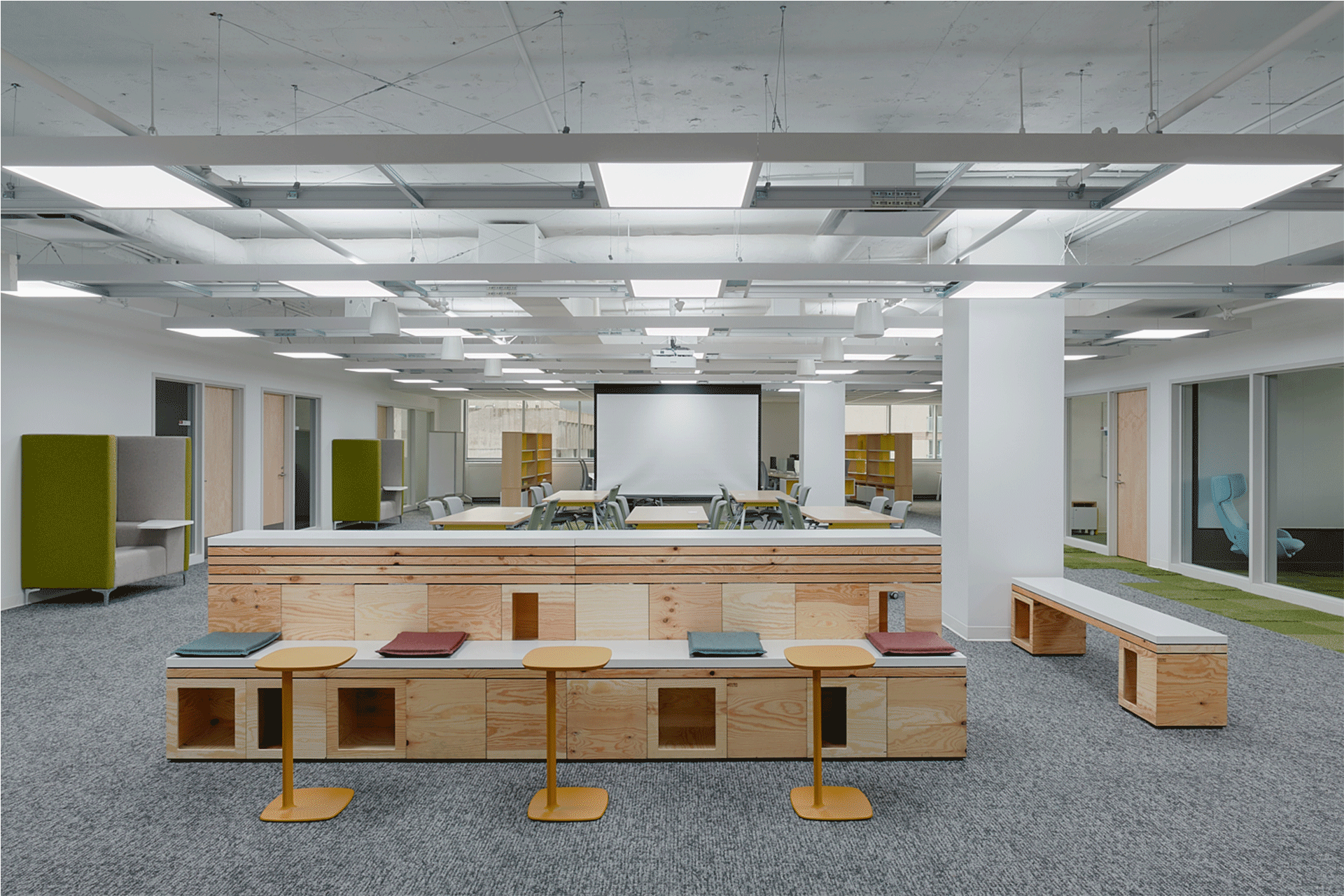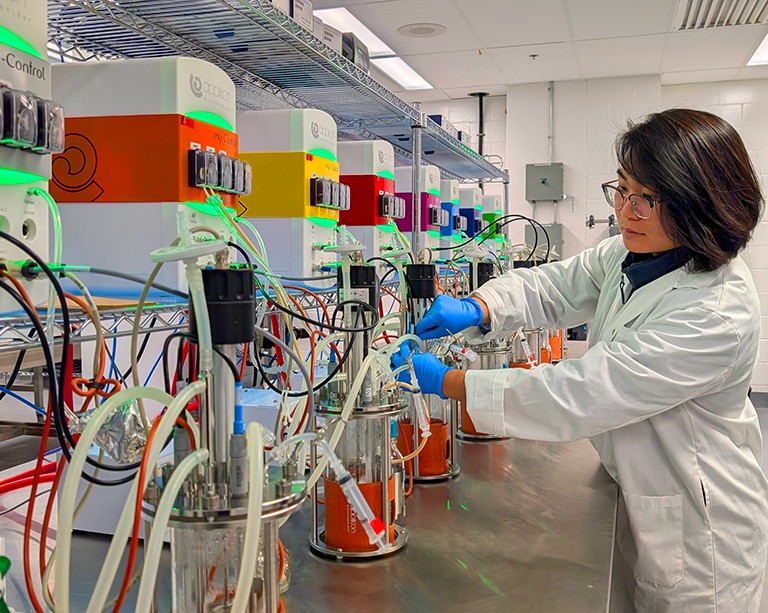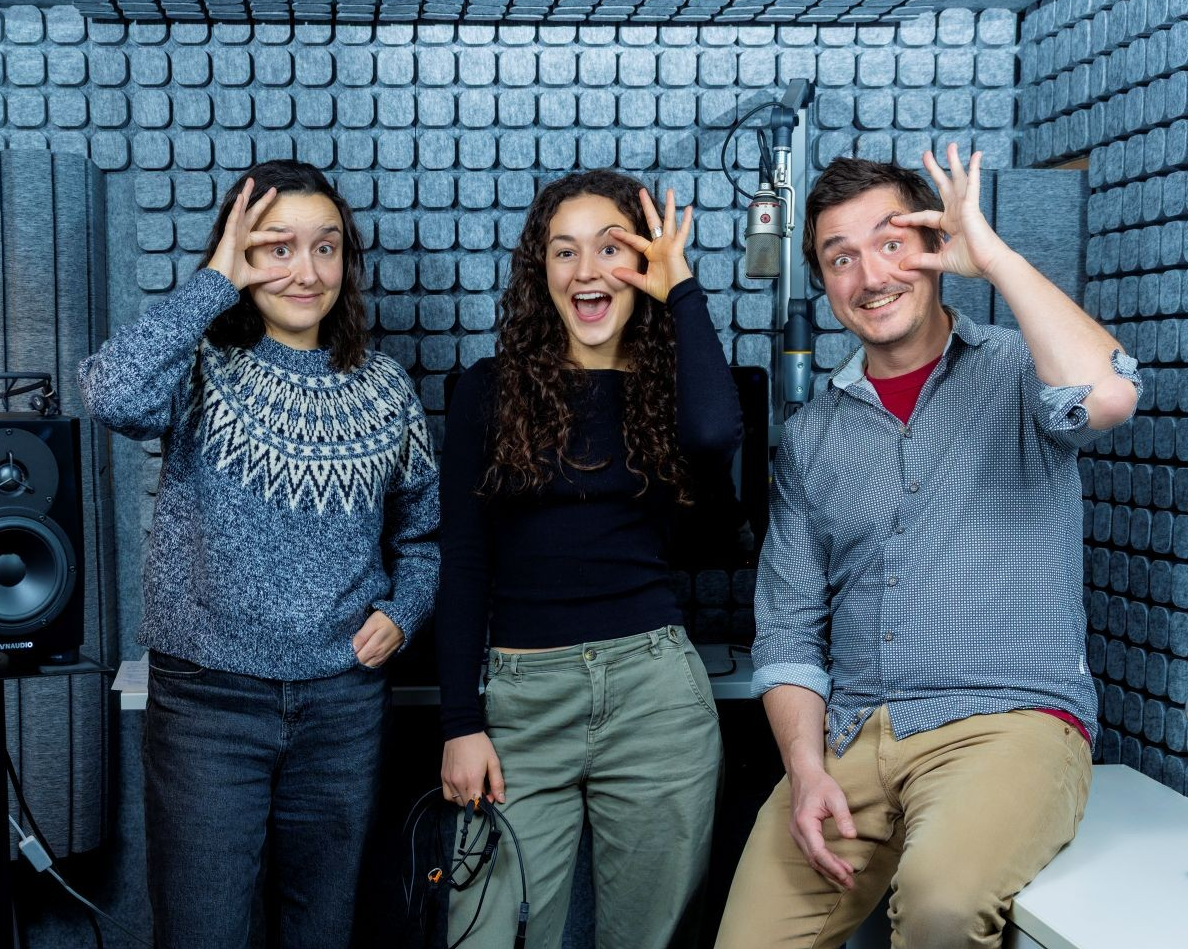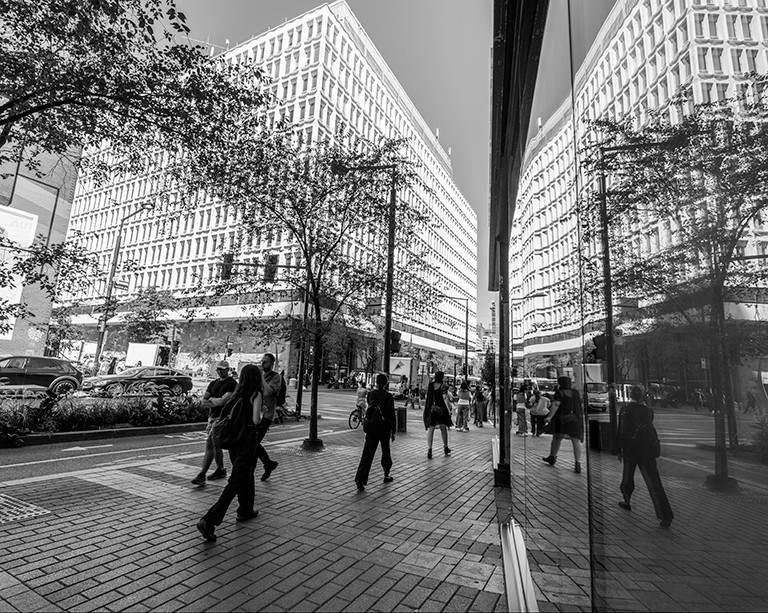Concordia’s Next-Generation Cities Institute pioneers indoor lighting more aligned with our biology
 Michael Bossert: “Our hope is that lighting systems like this one can influence workers’ well-being positively.”
Michael Bossert: “Our hope is that lighting systems like this one can influence workers’ well-being positively.”
It’s a photographer’s best friend, a plant’s most important energy source and a major perk for office employees: natural light. Lighting might not be top of mind for most people, but scientific research is showing that it has the capacity to influence mood, enhance focus and regulate sleep.
That’s why Concordia’s Next-Generation Cities Institute (NGCI) recently installed a human-centric lighting system, becoming one of the first workplaces in North America to install a system of this type.
“We wanted to give people a better quality of life and work while kind of being ‘locked’ behind spaces with no access to daylight,” says Michael Bossert, NGCI’s manager of research innovation and business development. “Having access to fresh air and an adequate light quality for the task to perform is directly connected to livability and well-being.”
As the name suggests, human-centric lighting puts human biology at the core. It mimics the natural daylight cycle — sunrise and sunset — and its impact on our circadian rhythm.
Human-centric lighting works by adjusting colour temperature wavelengths and light intensity throughout the day using intelligent sensors and controls. The goal is to work with the human biological circadian rhythm to enhance performance and productivity while benefitting health, sleep and overall mood.
Natural light and humans
Human life has changed a lot over the past 10,000 years, but our biology has not — including the way we react to light. The human circadian rhythm evolved in response to sunlight, moonlight and fire.
Compared to our hunter-gatherer ancestors, we spend a lot more time indoors using artificial light. This can wreak havoc with our hormone production, quality of sleep and many other biological functions.
“We wanted to have lighting that imitates nature,” Bossert explains. “We have a white ceiling to reflect the light, similar to a light sky.”
In the late 1990s, scientists discovered a new type of photoreceptor in the human eye that is sensitive to light intensity and specific wavelengths of light. It plays a significant role in regulating our circadian rhythms.
Bossert says human-centric lighting allows people to control when to stimulate those photoreceptors.
“If you want to concentrate, you can turn the control to get super bright white light with some bluish parts in it,” he notes. “And on the opposite end, if you want to create more of a lounge mood that feels relaxing, you can adjust the light so it’s warmer and more reddish and turn down the intensity.”
Studies throughout Europe, the United States and Asia have shown that human-centric lighting has significant benefits. In the work environment, employees have shown increased productivity, energy and work satisfaction.
In health-care settings, patients sleep better, feel calmer and recover more quickly. People with dementia have been found to experience fewer sleep disturbances and report improved well-being.
At school, students have more energy and are more attentive throughout the day.
Bringing human-centric lighting to the North American market
Bossert reports that human-centric lighting is much more widespread in Europe, where industrially produced systems of this kind are readily available to buy.
In North America, this technology remains difficult to implement because there are currently no lighting companies mass producing it. Where human-centric lighting does exist, it is usually a tailor-made solution that involves complicated controls similar to stage lighting.
With the support of a grant from the Canada Foundation for Innovation, Concordia was able to import a human-centric lighting system from European company LEDVANCE after obtaining a special field certification for the North American market.
The system was installed as an essential part of the new collaborative and agile NGCI office spaces designed by Ivona Bossert, design manager and knowledge mobilization advisor at the institute. The lighting system now constitutes a unique-for-Canada showcase of this technology of the future.
Ivona and Michael Bossert express the hope that human-centric lighting gains wider appeal at Concordia and beyond as part of the future of work.
They also believe that shift workers, who experience some of the worst circadian rhythm and sleep disruptions, could greatly benefit from this technology, Michael Bossert adds.
“Our hope is that lighting systems like this one can be installed elsewhere and become a beneficial standard solution in the context of work environments.”
Those interested in visiting the Next-Generation Cities Institute to learn more about human-centric lighting are invited to contact Michael and Ivona Bossert at michael.bossert@concordia.ca or ivona.bossert@concordia.ca.
Learn more about Concordia’s Next-Generation Cities Institute.




